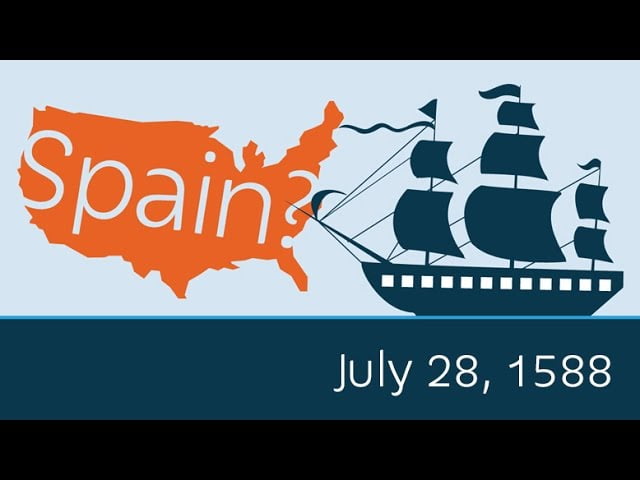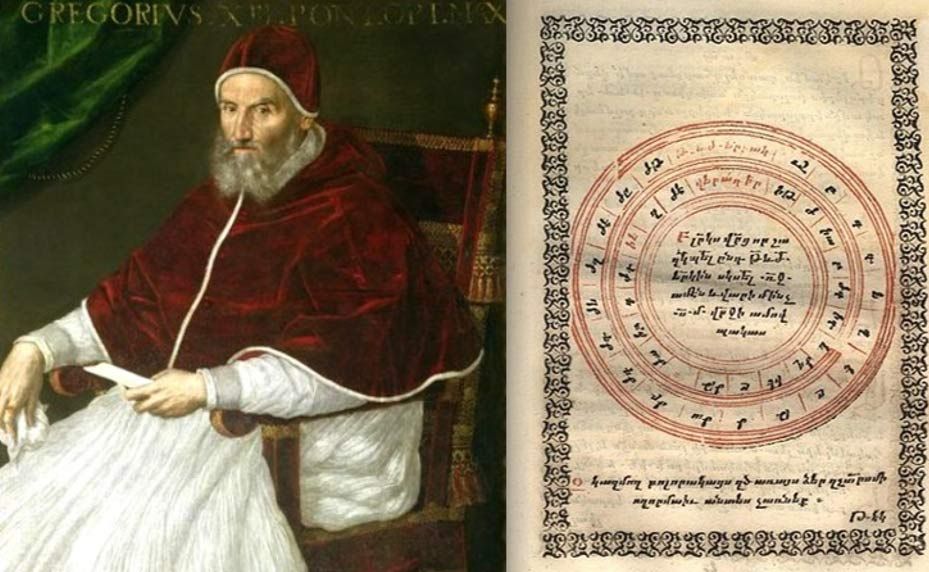In 1588, the most powerful man in the world was the King of Spain, Phillip II. Flush with gold and silver from the New World, he had no rivals, save one: Queen Elizabeth of England.
England was a Protestant nation and Spain was Catholic, as was most of Europe. In addition to considering her a heretic, Phillip hated her for two additional reasons: first, she was financing a rebellion by the Dutch Protestants against Spain in the Spanish Netherlands, which Phillip controlled; and second, because she had executed her rebellious cousin, Mary Queen of Scots. Mary, like Phillip, was a Catholic monarch. Phillip felt that Mary, not Elizabeth, was the rightful heir to the English throne.
Phillip felt that with the execution of Mary Queen of Scots, Elizabeth had gone too far. The time had come, he decided, to discipline her and her heretic nation.
He came up with an audacious plan. He would invade England. To do this he needed a large army and lots of ships. He needed an Armada.
130 ships that would carry 30,000 men.
Phillip was very rich, but not that rich. To build such a fleet, he would have to borrow heavily. But this wasn’t much of an obstacle. Once he had conquered England, he could use the English treasury to pay off any debts. The Pope, wishing to see England return to the Catholic fold, promised additional financing.
So, the ships were built and the soldiers recruited. Most importantly, Phillip had chosen a competent man to lead them, the Marquis de Santa Cruz.
Santa Cruz asked for more time to prepare his ships and men, but Phillip was impatient. Far too impatient, as it turned out. In a massive stroke of misfortune (the first of many) Santa Cruz died just before the Armada was to set sail. Rather than take the time to seek a suitable replacement, Phillip pushed ahead and appointed Duke Medina Sidonia to take command. There was only one problem: Sidonia was an Army general. He had no naval experience; in fact, he had never been out to sea.
You can’t hide 130 ships and 30,000 men. The English knew the Spanish were coming and they were ready for them. What they lacked in fire power, they made up in maneuverability, familiarity with the treacherous English Channel, and the most capable and creative sea commanders of the age — Lord High Admiral Howard, Sir John Hawkins and Sir Francis Drake. They knew they couldn’t win a shootout with the Spanish.
So instead, they launched a pre-emptive attack on the Spanish fleet while it was still docked in the French port of Calais. Setting a number of their own ships on fire, they sailed them into the port.
The Spanish cut their anchors to flee the flaming English ships, but, in their panic, they only made matters worse. The Spanish ships rammed into each other, tangling riggings, slicing sails and crushing hulls. The vessels that weren’t damaged were sitting ducks for the English cannon.
In the end, the English successfully sent the Spanish Armada fleeing, wounding both the military and Spain’s power structure.
Weather Conditions
One of the main factors that contributed to the defeat of the Spanish Armada was the bad weather. The fleet was delayed in its departure from Spain due to bad weather, and when it finally set sail, it was caught in a storm that damaged many of its ships. The English, on the other hand, were able to take advantage of the weather to launch a series of attacks on the Armada. God has been credited with controlling the weather and intervening in natural disasters throughout history. Here, the protestant nation of England might have been defeated had it not been for the intervening hand of God, but there were other factors that aided in the victory for England such as superior naval tactics and the mistakes made by inexperienced Commanders leading the Spanish army.
Conclusion
The defeat of the Spanish Armada was a significant turning point in the history of England and Europe. It marked the end of Spanish dominance over the seas and the beginning of English naval supremacy. The defeat also marked the beginning of a long and complex conflict between England and Spain, which would last for many years and have far-reaching consequences for the two nations.
While seemingly a random event that was disconnected from the founding of the U.S., McMillan said that the defeat of the Spanish Armada actually “made America possible”. “If the Armada had won, England would have become part of the Spanish empire. There would have been no further English exploration of the North American coastline,” he said. “Spain would have ruled America as it did south America. There would have been no 13 colonies, no 13 original United States. The America that we know would not exist.”
See also: https://www.history.com/this-day-in-history/spanish-armada-defeated



